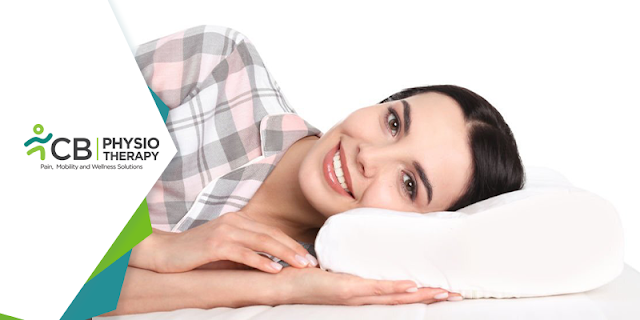Muscular Dystrophy: Regaining Muscle Function and Control by Physiotherapy
Muscular dystrophy (MD) is a progressive condition that begins by affecting a particular group of muscles and slowly involves the other muscles widely. It causes muscle weakness and loss of muscle control, it can even affect the heart or the muscles used for breathing and can become life-threatening. MD is an inherited genetic condition that gradually causes the muscles to weaken, leading to an increase in the level of disability. Though there is no cure for Muscular dystrophy, still treatment can help to manage many of the symptoms. These treatment interventions include physiotherapy that helps the patient with physical disabilities, lessens symptoms, and increases mobility. The physiotherapist can also help to keep the muscles strong and flexible, thus the patient should start working with the physiotherapist as soon as he/she is diagnosed with MD. This blog has been written to discuss physiotherapy management for patients suffering from muscular dystrophy.
Muscular Dystrophy
Muscular dystrophy is a deteriorating muscle-wasting condition caused by a mutation in the genes (responsible for the structure and functioning of a person's muscles) and is often inherited from a person's parents. It causes obstruction of the muscles' ability to function and over some time, this causes increased disability and can even affect the life span of a person.
Muscular Dystrophy is of many different types, and patients, children, or young adults have slightly different symptoms. For most people, the condition might worsen over time, and may lose the ability to walk, talk or care for themselves. But not all types bring about severe disability and many do not affect life span.
Physiotherapy Management
Physiotherapy is an approach that is required by all types of dystrophies to slow the progression of the disease progression, reduce pain, and maintain quality of life. Each child and adult may be affected differently by the disease and have unique needs. Therefore the physiotherapist develops a treatment plan according to the needs. Manual muscle testing helps to evaluate the muscle strength and range of motion tests can measure a joint's movement. Physiotherapy treatment comprises massage, exercise, education, and advice.
Respiratory exercises:
Breathing exercises and techniques are recommended to maintain a person's respiratory function as well as to keep the respiratory muscles strong and the chest clear.
Specific exercises help to strengthen the throat, jaw, and tongue muscles are done so that the patient can do daily tasks, like eating, swallowing, etc.
Range of motion exercises:
Range of motion exercises are done to increase the movement, and muscle strength, improve daily function, and also lessen the risk of contractures. These exercises are simple and can be done regularly at home. The patient should not try to push the joints too hard as it can cause pain. Shoulder exercise involves raising the arms over the head by grasping the non-dominant arm with the dominant arm at the wrist and holding it, then raising it above the head. Hold this pose for several seconds. Then repeat the same exercise with the dominant hand grasping the non-dominant arm. Another example is in which the patient is asked to lie on the back of the bed and asked to raise one leg in the air. Then bend the leg at the knee and rotate the bottom half of the leg at the knee joint. The same is repeated with the other leg. Or this can be done by even lying on the side and lifting the leg and down slowly to help with joint mobility.
Low-impact cardiovascular Exercises:
Low impact exercises are done initially as high-impact exercises can cause cramps the next day. Low impact exercises such as taking a short 10-20 minute walk on flat surfaces, 10-20 minutes of regular swimming, and bike riding can be done. These scheduled exercises are energizing, rather than tiring and also relieve muscle tension. Regular exercises aim to keep muscles in shape, reduce weight, and relieve the burden on joints, tendons, and muscles.
Strengthening exercises:
Strengthening exercises by using light-weight 5-10 lbs, with 5-10 high-repetition strength training programs are done initially to avoid muscle injury. Gradually lightweight can be progressed to heavier weights as per the comfort of the patient. Then gradually the number of repetitions and sets are increased with the goal of 10-12 repetitions and 4 sets of each exercise, performed 3 times a week.
Stretching exercises:
Stretching exercises help to improve flexibility and muscle strength and also reduce muscle spasms, reduce joint and muscular contractures. For stretching, splints are designed to help stretch and support the limbs which prevent or delay contractures that can affect different parts of the body.
Orthotic devices:
The right type of brace is recommended and the patent is asked to maintain as much mobility as possible. Walking aids, calipers and orthoses can be used to provide mobility and reduce the risk of falling. Orthoses can be used on the feet to help keep the feet from pointing downward and can also be worn while walking, standing, and sleeping.
Positioning aids:
Patients are advised to maintain correct posture as this may elongate the muscles as well as improve the joint range in the knee, hip, ankle joints, and also in the spinal column. Several types of positioning aids, equipment, and mobility options can be used during the treatment to help improve the quality of life. Proper seating and also the right type of wheelchair are essential to help prevent scoliosis and maintain spinal curvature
Hydrotherapy:
Exercising safely in water gives the body an added layer of protection because the water makes the body weighs less, making the exercise even more low-impact exercises like arm circles, wrist circles, bending the elbow, flexing the fingers, and moving other joints while submerged in the water can be done.
As the condition progresses patients must adjust their exercise routine, this can be done by the concerned physiotherapist who assesses the patient's progress, and symptoms and makes the required changes in the treatment plan.


